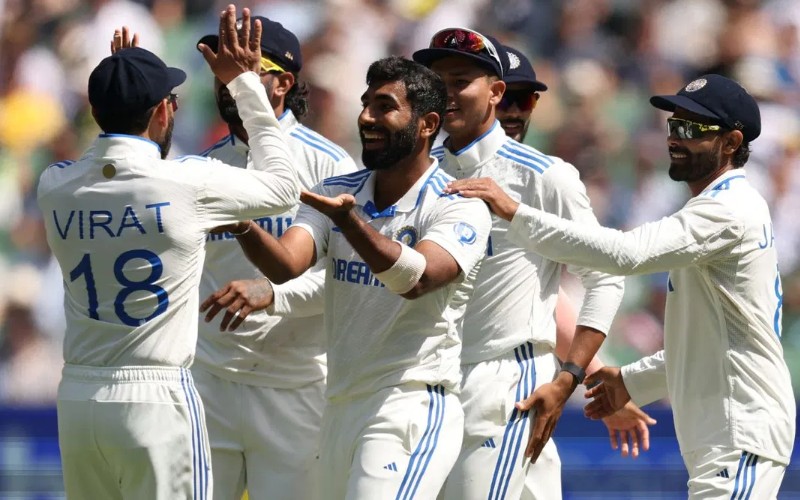India’s remarkable back-to-back Test series victories in Australia were largely due to the effectiveness of their fast-bowling line-up, led by the formidable Jasprit Bumrah. His ability to perform under pressure and deliver match-winning spells has made him a key figure in India’s cricketing success. However, despite Bumrah’s brilliance, the gap between him and the other pacers in the team was glaringly evident during the recent Border-Gavaskar Trophy, where India suffered a 3-1 series loss to Australia.

Bumrah, who consistently delivered exceptional performances, finished with 32 wickets from 151.2 overs at an average of 13.06 and a strike rate of 28.4. On the other hand, India’s other pacers, including Mohammed Siraj, Akash Deep, Prasidh Krishna, Harshit Rana, and Nitish Kumar Reddy, combined to take 40 wickets across 351 overs. Their joint average was a concerning 34.82, and their strike rate stood at 52.6, indicating a lack of the impact expected from the backup bowlers.
This disparity raises questions about India’s fast-bowling depth, especially in a competitive environment like Test cricket, where consistency is key. Sunil Joshi, the former Indian cricketer and chief selector during India’s 2020/21 series win in Australia, remains optimistic about the future of Indian fast bowling. However, he highlighted that India’s fast-bowling attack missed the presence of a left-arm pacer, which could have added valuable variety to the attack.
ALSO READ: Sunil Gavaskar Backs Jasprit Bumrah As Future India Captain After Strong Leadership In BGT
“If a left-arm seamer would have been there, there would have been a change in angles, and many Australian, English, and New Zealand batters are uncomfortable facing left-arm seamers,” Sunil Joshi explained. While Yash Dayal and Khaleel Ahmed were available, they didn’t feature in the series, which Joshi considers an unfortunate oversight.
Reflecting on India’s performance in the 2024 tour of Australia, Joshi pointed out that despite several injuries to players, India managed to field a competitive team, with some net bowlers stepping up to play crucial roles. However, India’s tactical approach, particularly against Australian batters, left much to be desired.

Sunil Joshi noted the importance of learning from the opposition and being more consistent in implementing tactics. He admired Nathan Lyon’s patient and consistent approach, which he felt India should have emulated, particularly with their fast bowlers. Joshi was also critical of the team’s tactical execution throughout the series. He asked whether India’s players had truly given their best effort and played their roles with clarity and discipline.
ALOS READ: Manoj Tiwary Calls Gautam Gambhir A ‘Hypocrite’ and Criticizes His Coaching Staff As ‘Yes Men’
“We need to ask ourselves, did we give our best shot in terms of being disciplined? Did I play my role clearly?” Sunil Joshi reflected. He emphasized the significance of these “small things” in determining a team’s success, especially in Test cricket, where consistency and discipline are paramount.
Another surprising development on the tour was the sudden international retirement of Ravichandran Ashwin following the third Test at the Gabba, which ended in a draw. Ashwin, who did not feature in that game, caught many off guard with his decision.

“I felt very surprised by that,”Sunil Joshi admitted. “I don’t know what transpired during or between the second and third Test matches.” Despite the shock, Joshi acknowledged Ashwin’s contributions to Indian cricket, describing him as a modern legend. However, he questioned the circumstances surrounding Ashwin’s decision, suggesting that the Board, selection committee, and team management would need to address it.
In conclusion, while India has great fast-bowling talent, the recent series loss to Australia highlighted the need for more consistency and depth within the bowling unit. The absence of a left-arm pacer, lack of tactical adjustments, and sudden retirement of key players like Ashwin all raised important questions about India’s preparation and execution. Moving forward, India will need to address these concerns and continue to build a more cohesive and versatile bowling attack to maintain their dominance in world cricket.
